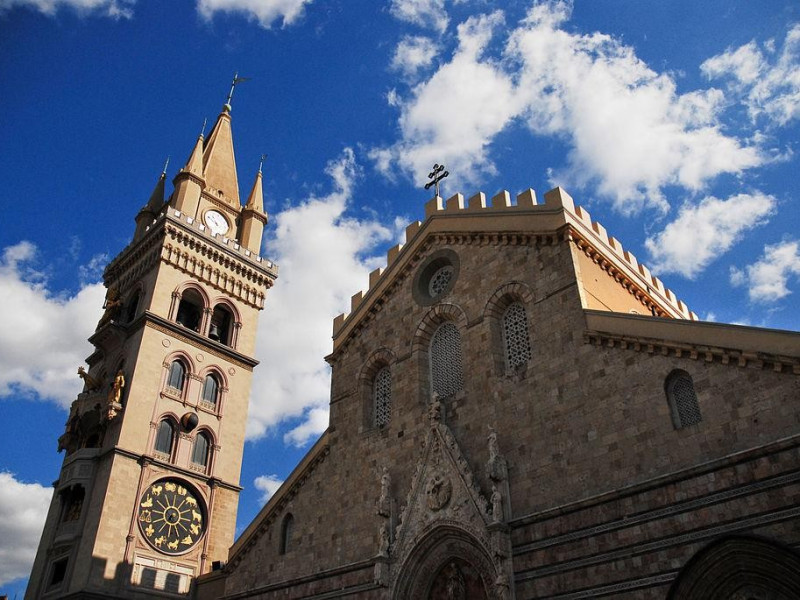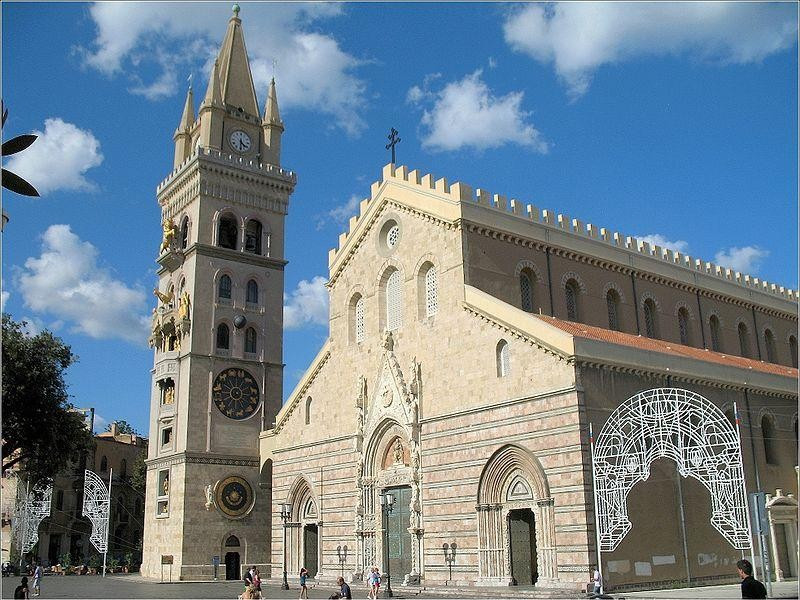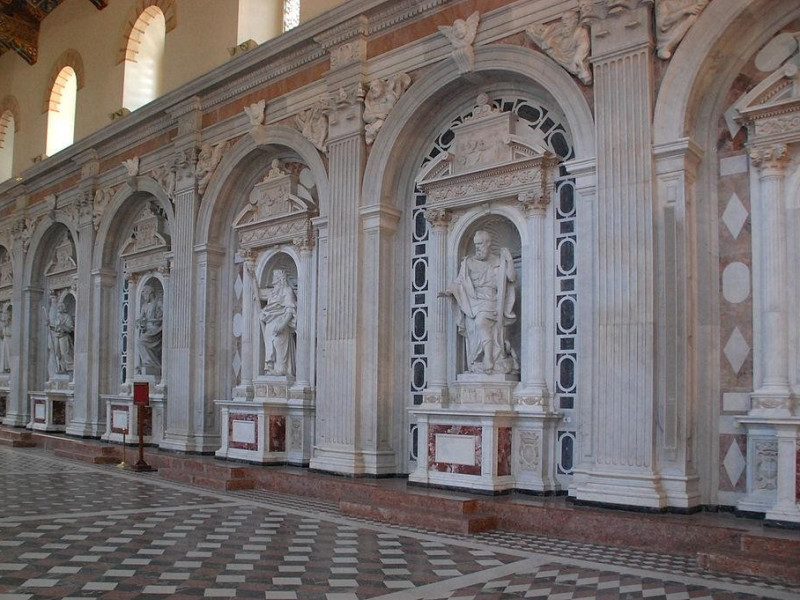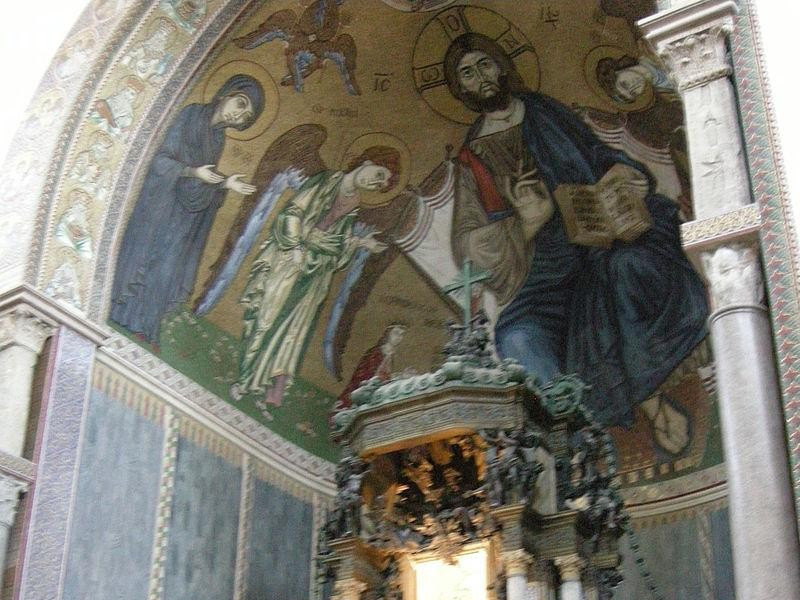Duomo di Santa Maria Assunta
The first temple was built during the Empire of Justinian I (535). During the two centuries of Arab rule, the building will be transformed into a mosque. Between 1060 and 1072, Roger the Norman conquest of the city and return the Church to the Christian cult, starting the beginning of the reconstruction. The rededication takes place in 1197. In the Aragonese period are introduced decorative elements of great importance, such as mosaics, ceiling decorations, the beautiful portals, the marble facade and the imposing complex of the apostolate by Giovanni Angelo Montorsoli, disciple of Michelangelo Buonarroti. The flourishing of Baroque determine overlapping elements that spoil the simplicity of the lines: stucco, frames and countless altars (less than 23), going so far as to turn the pointed arches in Romanesque arches. The high altar is dedicated to Our Lady of the Sacred Letter, Patroness of the city, with a chapel of gilded copper and precious stones. In the choir there are three royal tombs: the Emperor Corrado IV of Swabia, the Queen Antonia del Balzo, Frederick IV's wife and Alfonso II, King of Naples. With the earthquake of 1908, the Cathedral collapsed almost completely, but the reconstruction of the twenties brought the temple to its original design. The facade is a salient, topped by battlements, with the bottom decorated with polychrome marble inlays, and the upper stone, with three single and a Gothic rose window. At the three naves open as many Gothic portals, the central one (1412), is the work of Antonio Baboccio from Piperno. Inside, the nave is covered by wooden trusses painted and decorated with geometric figures and saints. The walls of the aisles are enriched by the Chapels of the Apostolate, a series of twelve niches (six for aisle) containing many statues depicting the Apostles. The complex is designed and partly executed by Giovanni Angelo Montorsoli between the sixteenth and the eighteenth century. The main apse is introduced by a staircase inlaid marble, as the altar, surmounted by a canopy in gilded copper particularly sumptuous and the frame with the image of the Madonna of the Letter, by Adolfo Romano. The Treasure of the Cathedral, on the side facing south, is a rich collection of precious objects of worship belonged to the Cathedral since the Middle Ages, most of silverware work by Messina renowned goldsmith school. The most valuable piece is the so-called "Golden Manta", by Innocenzo Mangani 1668.






